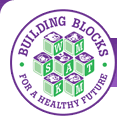
| Brought to you by the US Department of Health and Human Services, Substance Abuse & Mental health Services Administration |
 |
Home  About Us About Us  Links Links  Get E-mail Updates Get E-mail Updates  Awards Awards |
 |
|||
|
|
|||||
| Send this page to a friend | Print this page |  |
||||
|
|
 |
 
Related Content
Family Activity: Show Me, Tell Me, How Do You Feel?
Family Quiz: Encouraging a Child’s Creative Expression
Express Yourself!Children’s ability to express themselves creatively is often associated with positive social, emotional, and behavioral health. It is important for caregivers, educators, prevention professionals, and community members to help children cope with their feelings by channeling self-expression into healthy avenues. Self-expression can take many forms, including art, dance, and creative play. Activities such as participating in imaginative role-playing, engaging in creative writing, playing sports, and building objects with blocks or LEGOS™ allow children to express themselves freely and communicate their feelings. These activities also provide them with an opportunity to learn more about themselves while increasing their self-confidence. Involvement in these types of activities can help foster children’s healthy development and prevent them from engaging in risky behaviors now and later in life. Promoting Self-Expression Use the following tips to encourage your children to express their individuality and gain self-confidence:
Family Activity: Show Me, Tell Me, How Do You Feel? Educator Activity: The Creative Classroom: Time and Space for Self-Expression Quiz for Parents: Encouraging a Child’s Creative Expression ResourcesU.S. Department of Health and Human Services
First Lady Michelle Obama’s Let’s Move Campaign
National Association for the Education of Young Children
Mental Health America
Sajit Greene
P.E.Links4U.org
PBS.org: The Whole Child
Education.com
|
||||||||||
| Site Map | Contact Us | FAQ | Ask SAMHSA | Privacy Policy | Web Site Policies | FOIA | USA.gov | Plain Language |
|
Updated on 3/21/2012 |